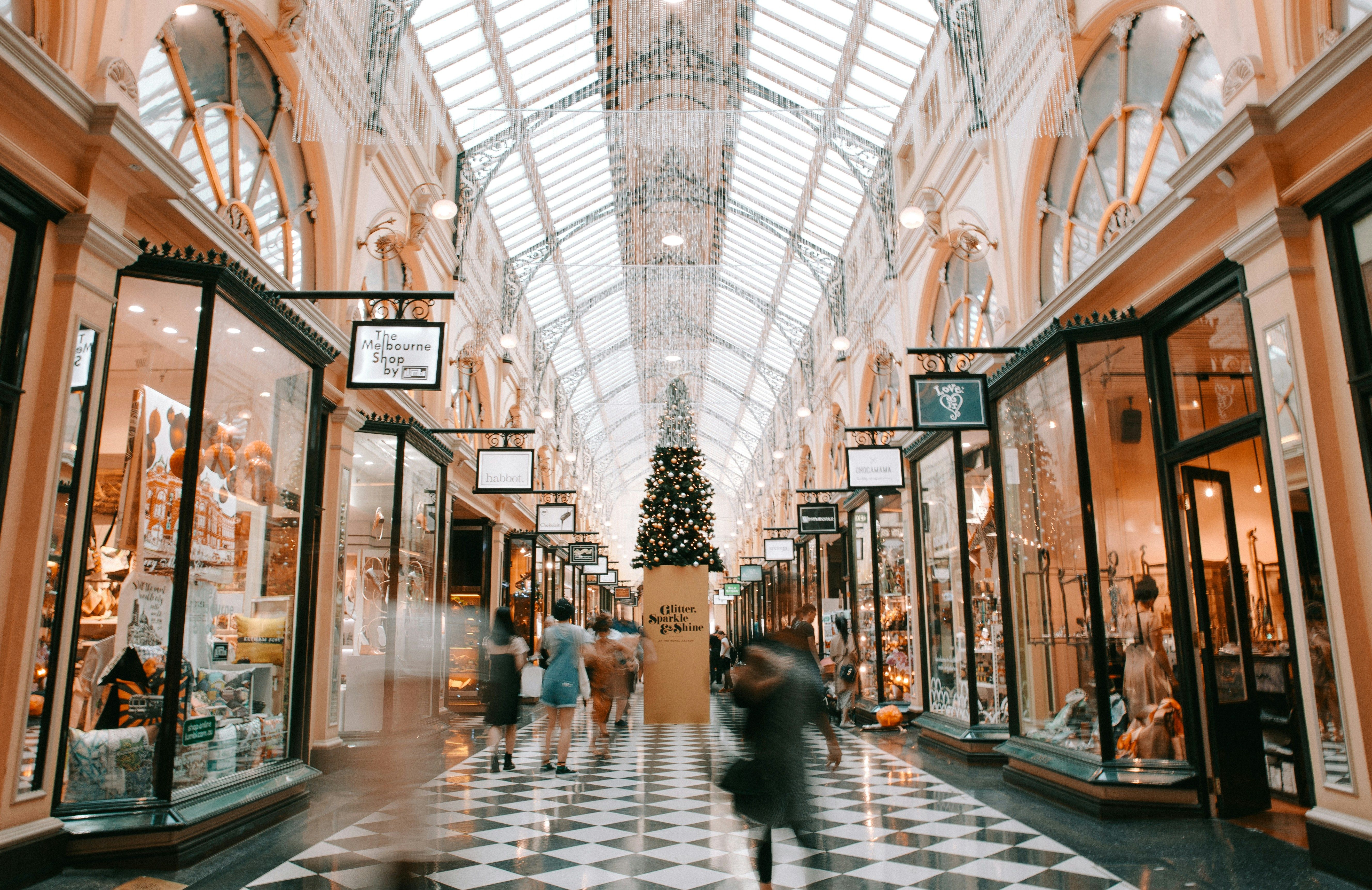5 realistic retail trends for 2025
)
It’s that time of year where everyone gets out their retail crystal ball and starts predicting the trends that will shape the next 12 months.
All too often, either the same trends get mentioned every year – omnichannel, personalisation etc – or people jump ahead too far, usually because they’re caught up in the possibilities of new tech, rather than the realities of what it can do now.
For our pick of notable retail trends for 2025, we’ve focused on what’s both realistic and impactful. So, what made our list?
Affordable Luxury Will Continue to Grow
No-one needs to tell consumers that their finances are having a hard time right now. While their money may not be going as far as prices rise across the board, it’s also true that consumers aren’t keen to give up on all non-essentials and luxuries. In fact, when times are hard, consumers tend to look for ways to treat themselves.
For some time now we’ve been tracking a trend that we call ‘premiumisation’, which is where mass market brands introduce premium elements to elevate the customer experience and differentiate themselves.
This trend towards affordable luxury will continue to grow next year as retailers look to win over consumers who are cost-conscious but want to still enjoy themselves and buy things. Premiumisation is a way to justify a higher price point, and a tool to convince shoppers to splurge, as well as encourage consumers who might shop with more expensive retailers to trade down.
One of the best examples of the trend in 2024 was H&M’s pop-up in Stockholm. The brand took over Birger Jarlspassegen, a small 19th century mall, opening stores dedicated to different parts of the H&M business in the different spaces. This included a pop-up restaurant in partnership with local chefs.
The whole thing looked and felt like something that a luxury brand would put together, which helps reposition customer perceptions of H&M.
Affordable luxury could also be a stepping stone towards a more sustainable future. If through premiumisation brands can get consumers to pay more, then this can help justify the creation of better quality products that can stand up to years of wear, rental, resale, and re-use.

Supply Chains Will See a Shakeup
Last year, we highlighted the need for retailers to build agility and resilience into their supply chains in order to deal with any future disruption.
This is still the case with the possibility for geopolitical and climate disruption likely to be part of the conversation when making sourcing decisions in 2025. However, we’re also set to see supply chains get a shakeup from changes to tariffs and customs.
Back in February 2024, the EU adopted a proposal for a reform of the EU Customs Union, which included removing the current customs duty exemption for goods valued at less than €150. Reportedly, 2.3 billion items that fell below this €150 duty-free threshold were imported into the EU in 2023.
There doesn’t appear to be any timeline attached to the reform plans currently, so it’s almost guaranteed not to come into effect in 2025. However, retailers may need to start looking into whether it might affect them sooner rather than later.
Likewise, in January Donald Trump will officially take over as the next US President. He has indicated that he plans to impose tariffs on foreign goods imported into the US. Exactly what these tariffs will be and when they come into effect remains to be seen.
However, recent social media posts by Trump suggested plans for 25% duty on imports from Canada and Mexico and possibly an additional 10% on imports from China. With Trump having previously talked about a 60% tariff for goods from China, it’s impossible to say precisely how things will play out.
Again though, retailers and brands will need to pay close attention to developments over the next 12 months so they can adapt supply chains and pricing strategies as needed.
If new tariffs are put in place, we could see US retailers growing their near sourcing operations. There is also the potential for any countries with tariffs imposed to put their own tariffs onto goods imported from the US which could shake up the market even more.

Brand Authentic Pop-ups
In last year’s trends forecast, we correctly predicted an uptick in medium-term pop-ups in 2024. Pop-ups that are designed to last several months or even years have appeared over the last 12 months to cover the festive period, soft launch a brand before their permanent store opens, or to keep them operating while a permanent space is being refurbished.
Moving into 2025, we see the role of pop-ups continuing to evolve with a greater focus on being true to the brand. The best pop-ups we’ve seen this year have been brimming with authenticity, which has enabled them to be memorable and make an impact in an ‘honest’ way.
Take IKEA’s Hus of Frakta pop-up on London’s Oxford Street. With a permanent IKEA store due to open in 2025 on the same street, this pop-up could have simply been a small-scale taster.
Instead, IKEA opted to focus entirely on its famous giant blue bag, offering customers the chance to personalise their own – very affordable – Frakta bag. The pop-up was executed like a marketing exercise but one that customers were willing to take part in.
Crucially, Hus of Frakta showed personality. It demonstrated that IKEA doesn’t take itself too seriously and brought its tagline – the wonderful everyday – to life beautifully.
At the other end of the scale is Louis Vuitton’s New York pop-up. Designed to be in place for several years while its nearby permanent store is being renovated, the brand has approached the pop-up with the same exacting quality and attention to detail that you’d expect for a major flagship development.
The result is a five-storey space that is as premium and luxurious as any permanent store. It feels like Louis Vuitton. It’s completely true to the brand while offering something new to customers – notably Louis Vuitton’s first US chocolate bar and an on-site restaurant.
A pop-up’s job may be marketing and education, but only brands who really understand the power of physical spaces to engage new and existing customers – and those who can do it in a way that is authentic to their brand – will reap the benefits in 2025.

Service-Led Physical Retail
The addition of services to physical retail isn’t a new idea but until now these services have very much felt like exactly that – simply add-ons. A lot of brands still aren’t thinking enough about the way that shopping is changing when coming up with store concepts. They’re holding onto an old product-first model and trying to stick new bits on.
At the same time, more and more consumers are researching products and learning about brands online before they ever visit a store. And of course, they’re buying online as well. This can leave physical retail looking like the poor relation that’s trying to do the same thing as e-commerce but always a bit behind the fast-changing digital world.
Some brands are thinking more deeply about physical retail’s role though, which is leading them to opening spaces that drive sales and brand awareness through a service-first approach.
One of the biggest sectors we’ve seen this happening in is wellness. Businesses like When Nature Calls in Amsterdam are redefining the way we think about alternative and natural health products, such as fungi and adaptogens.
In order to overcome preconceptions and stereotypes around its products, When Nature Calls has created a space that has more in common with an expensive spa than a retail store.
Customers can access workshops, mini-retreats, and try out new innovations such as red-light therapy, microdosing meditations, and a bar serving mushroom coffees and teas.
In Vienna, Biogena is technically a store that sells micronutrients, but this function is secondary because the space is also a clinic and treatment space, a community and events space, and a café.
People visit to access things that they can’t get online. And this leads to them buying products. As more brands come to realise this, we expect to see more service-led retail concepts launching in more product categories over the coming year.

AI Transparency
There’s been plenty of noise about artificial intelligence this year and unlike developments like the metaverse and NFTs, this is likely to continue in 2025.
If multiple reports are to be believed, large numbers of both retailers and consumers are already using AI.
According to a survey by Verizon Business and Morning Consult, 39% of small and midsize businesses (SMBs) say they are using AI in 2024 – more than double the percentage who were using it in 2023. A Syndigo report found that 9 out of 10 retailers are using generative AI to improve the customer experience.
Research by the Retail Technology Show (RTS) reported that AI is the top technology that UK retail leaders feel will unlock and accelerate growth for their businesses in 2025.
What’s interesting though is that reports also indicate that consumers aren’t necessarily aware that they are using AI when they shop. A Bain & Company survey of US e-com shoppers found that a massive 71% were not aware of having using generative AI, even though they had recently shopped with retailers where there was a high chance they would have crossed paths with the tech.
It begs the question of whether retailers should be transparent and upfront with consumers about their use of AI in 2025.
Although AI may have appeared to have made massive leaps forward this year, it’s still a technology that is in the early stages of development and implementation. Consumer buy-in isn’t just crucial to the uptake of the tech but also its training and improvement.
Retailers who are transparent about its usage may not only benefit from gathering additional data from consumers (with consent), but they may also find customers are more forgiving when the AI makes a mistake or hallucinates a response. Either way, it comes down to trust and reputation, which few retailers can afford to lose at any time of year.

